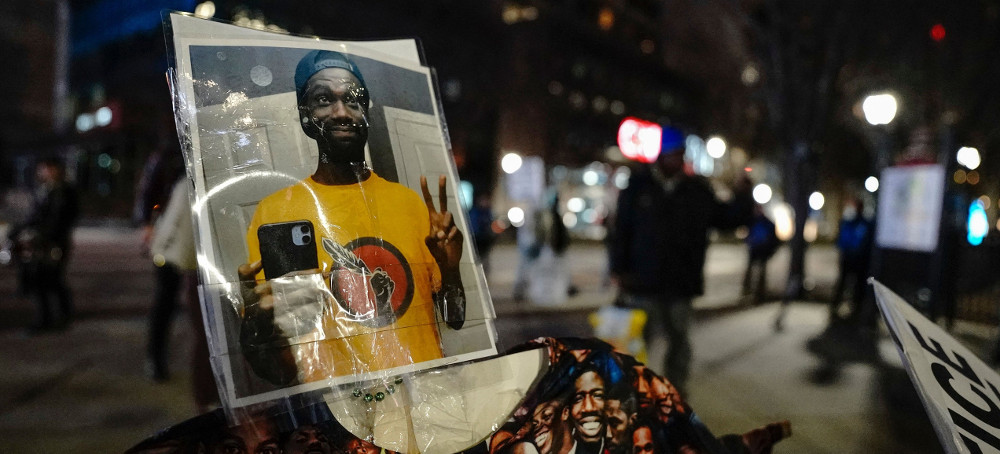The Memphis Police Are Not Bystanders to the Death of Tyre Nichols
Doreen St. Félix The New Yorker The City of Memphis has made an exhibition of the footage of Tyre Nichols’s brutal beating by police officers, calculatedly situating the city and its police as the conduits to truth. (photo: Cheney Orr)
The City of Memphis has made an exhibition of the footage of Tyre Nichols’s brutal beating by police officers, calculatedly situating the city and its police as the conduits to truth. (photo: Cheney Orr)
ALSO SEE: Impassioned Calls for Police Reform at Tyre Nichols' Funeral
By appropriating citizen-made mechanisms for monitoring violence, the police have spun failed reform into a myth of incremental accountability.
The creation of this atmosphere, one of anticipatory dread, speaks to the years that have passed since the uprisings following George Floyd’s murder. Before the footage was released, schoolchildren in Memphis were sent home early. Officers in the city and in other metropolitan areas around the country prepared for protests. Nichols’s family gave interviews encouraging a peaceful and polite response from the public. The five officers who killed Nichols, all of whom are young Black men, were fired and indicted on charges including second-degree murder and aggravated assault, before the video’s release—an attempt to invest the document with the energy of justice.
The City of Memphis has made an exhibition of the footage, entering the video, and the idea of the video, into a lineage of truth-telling documentary, situating the city and its police as the conduits to truth. In the interview with Lemon, Davis did some media analysis, comparing the Memphis footage to that of the 1991 recording of L.A.P.D. officers beating Rodney King—a recording that was taken by a bystander. In 2023, Davis, a representative of the state, is urging the witnessing of a cultural object that her own team has so violently made.
What is the unvarnished truth, the information, supposedly transmitted? In the footage, which was published on Vimeo, on Friday evening, in four different installments, officers descend on Nichols, under the pretense of a traffic stop. They punch him. They beat him with a baton. Nichols attempts to flee. They spray him with pepper spray. They issue contradictory commands, more than seventy. Nichols flees. Nichols is found, and beaten again, until he slumps next to a vehicle, unmoving. All this: data, irrefutable.
There is other information conveyed, and it is moldable. The police-brutality video, its ability to shock and to outrage, to center the ethical viewer’s reaction, can supplant the brutality itself. The police apparatus is a storytelling apparatus—a resourceful one. And the killing of Tyre Nichols produced an opportunity for a story. The videos’ carefully choreographed release and the rhetoric used by public officials demonstrate how thoroughly the carceral state has appropriated liberal critiques of police violence. The story that they’ve told imbues instruments of surveillance—the footage, which has been edited and redacted, was drawn from body cameras and from a SkyCop feed, a street camera designed to deter crime—with the aesthetics of sousveillance, of “watching from below.” The story stresses the evidentiary function of police-generated body-camera footage; in the courts, video is never neutral, and what it captures can be interpreted to justify excessive force. The M.P.D.’s story also permits the department to disavow certain officers, to make a spectacle of their Blackness so as to distance their actions from the project of policing. The story seeks to spin a failure of reformism into a myth of incremental accountability—a myth that the police are interested in policing themselves. It’s a myth that strengthens our necropolitics: the death of Tyre Nichols as a kind of sacrifice, in the name of a far-off but attainable improvement.



